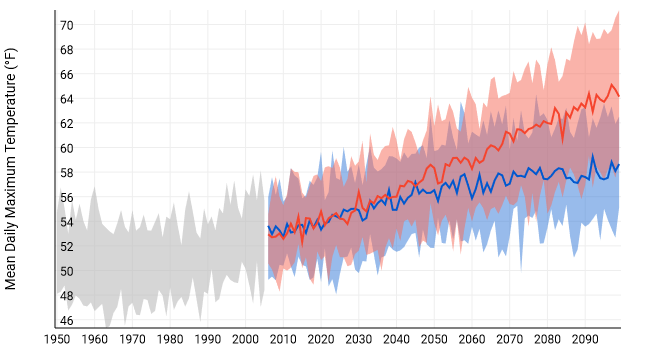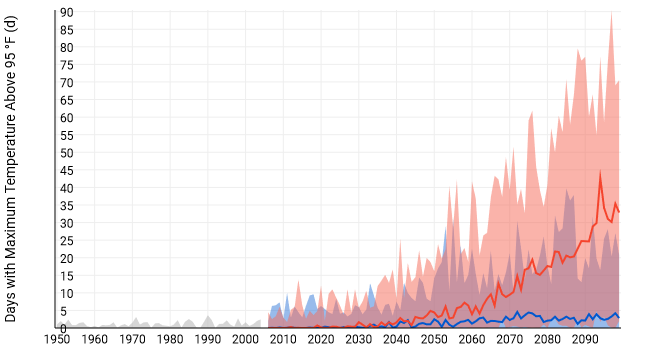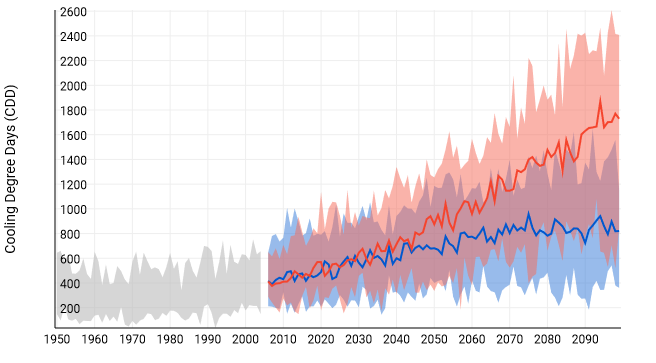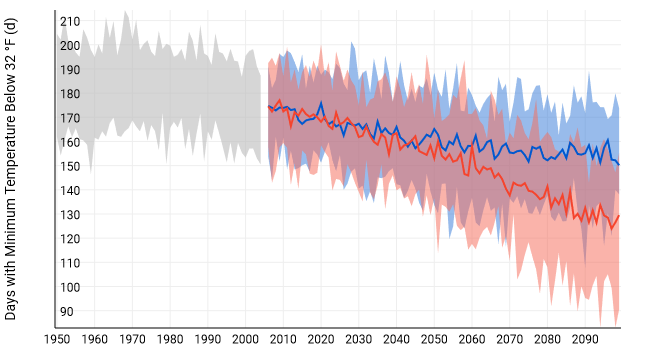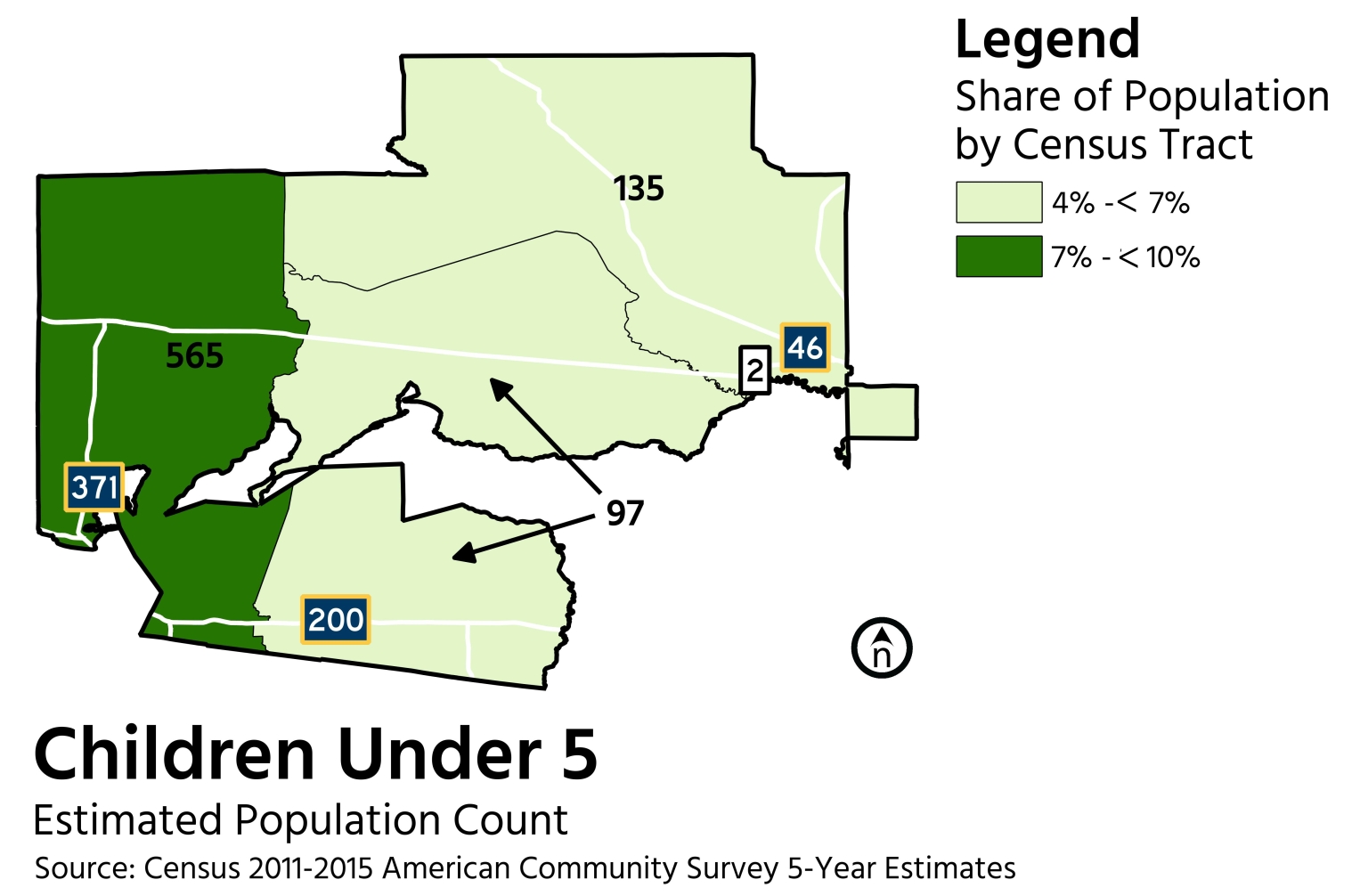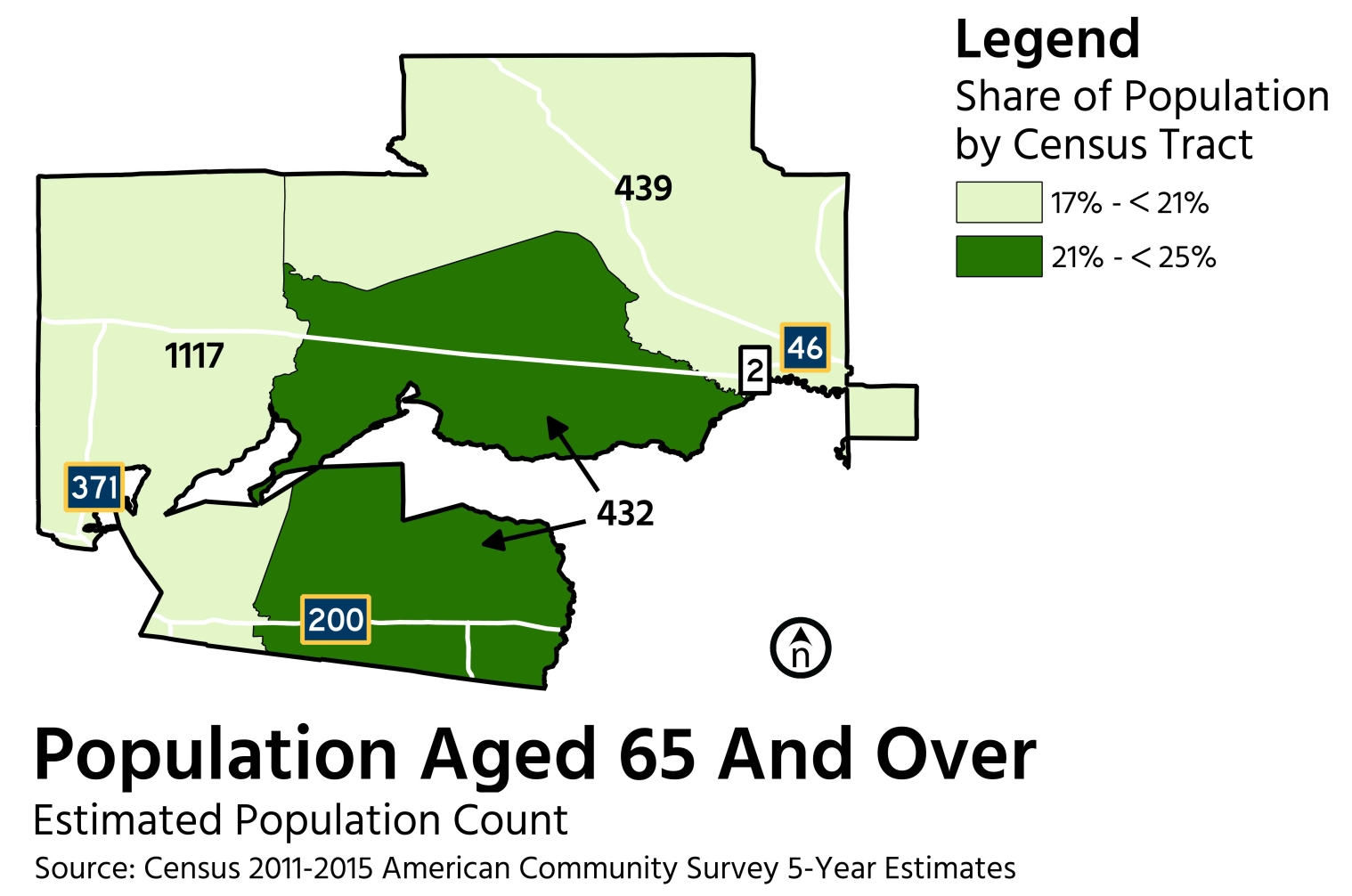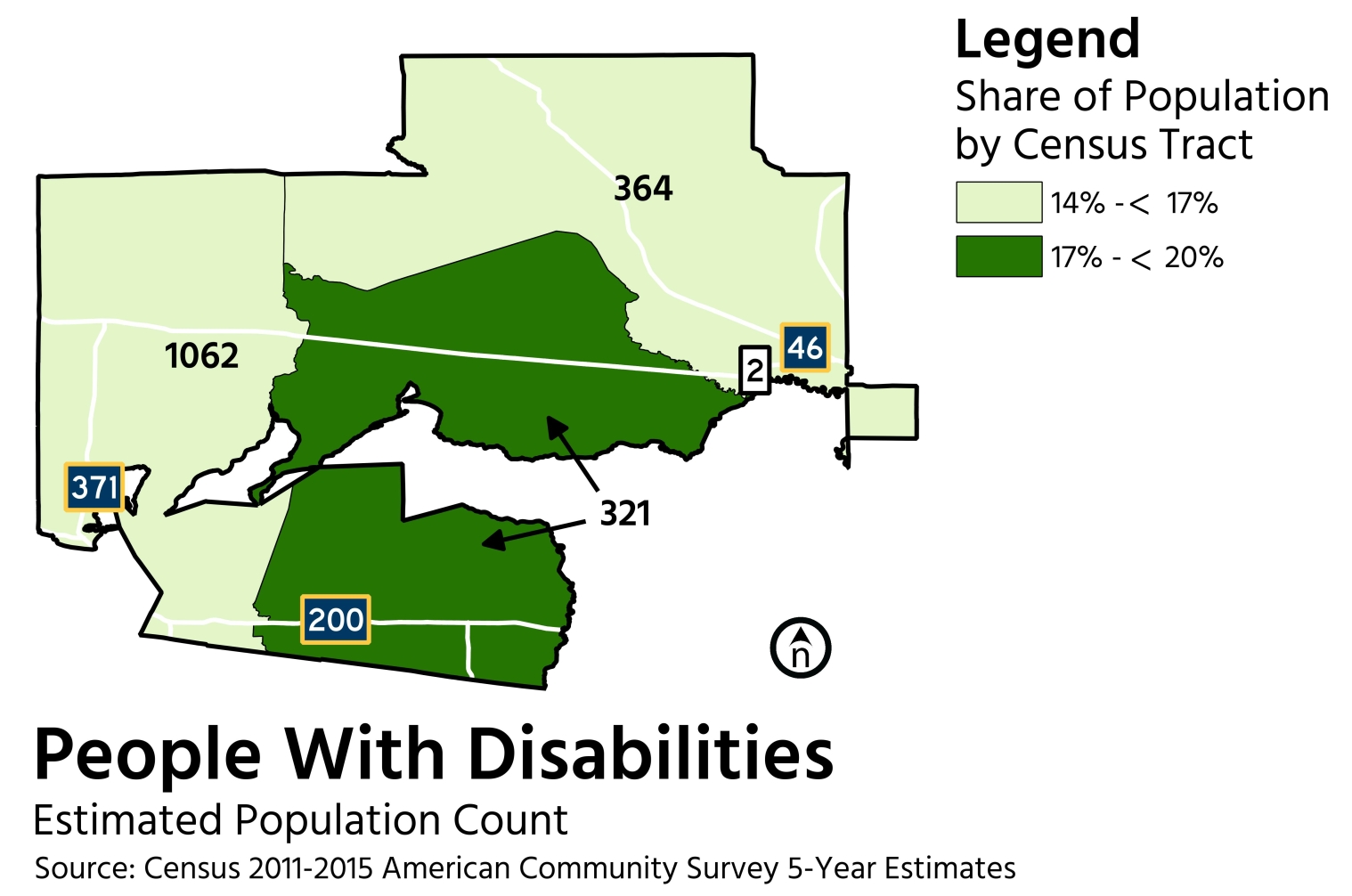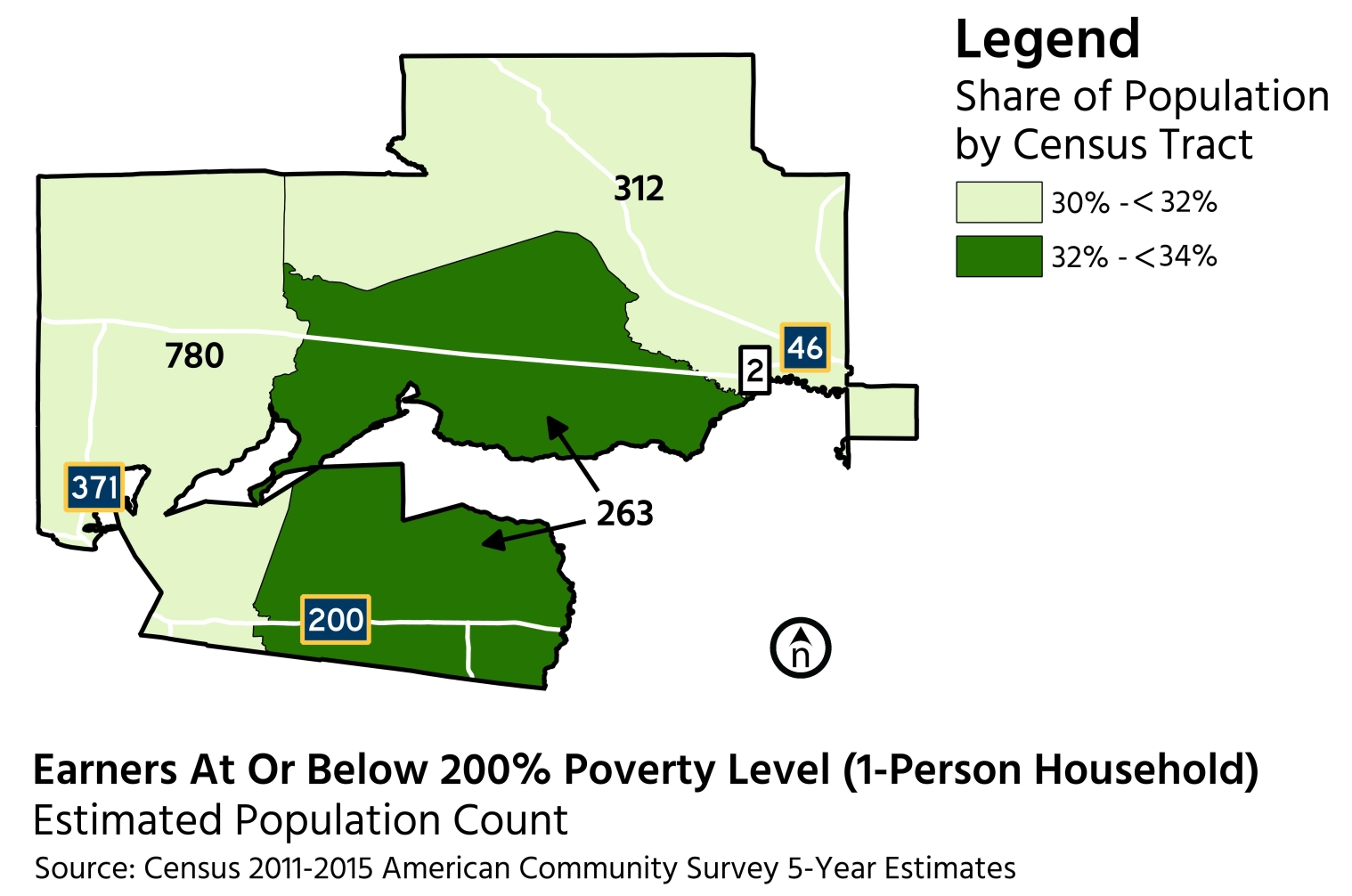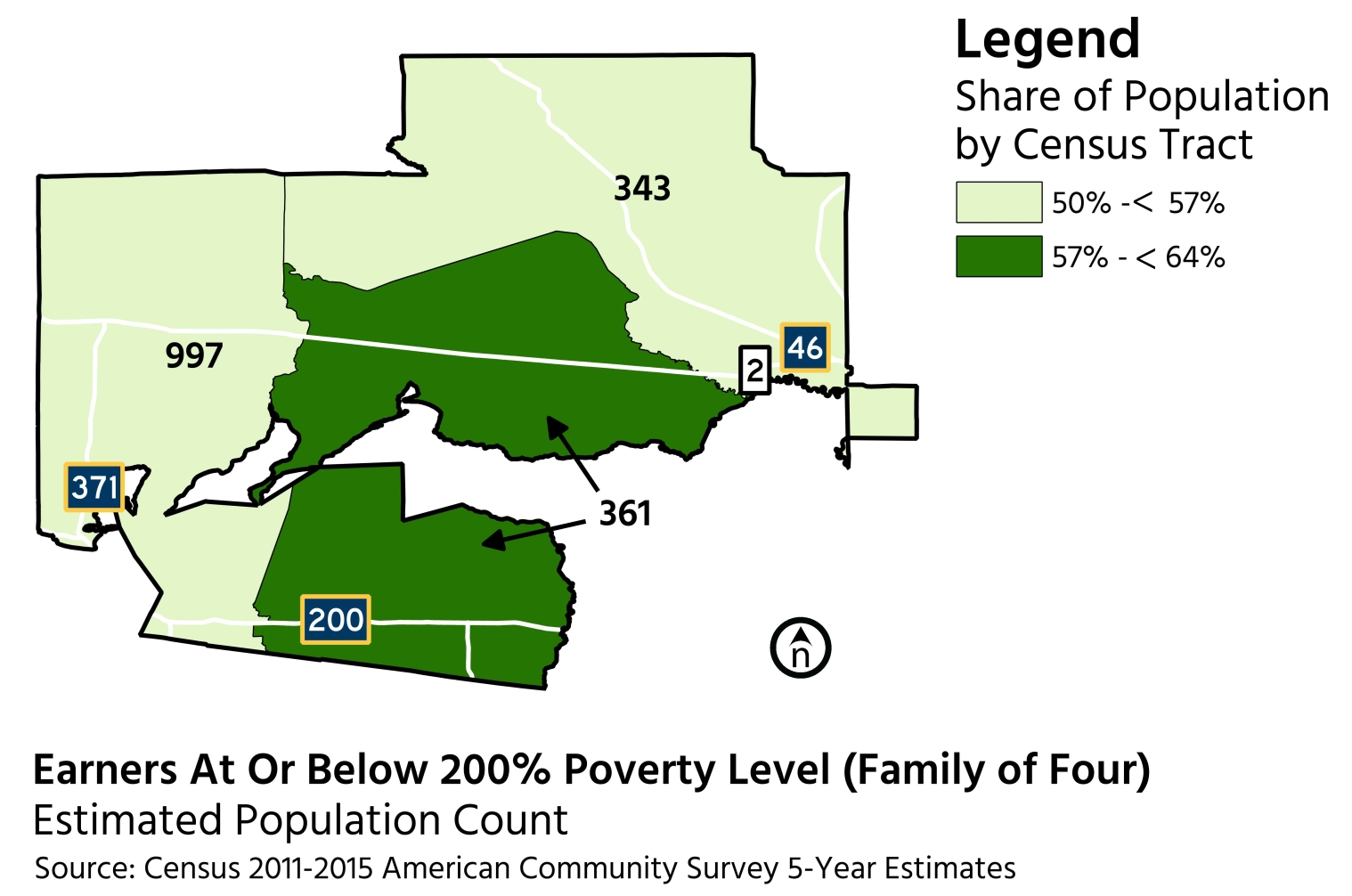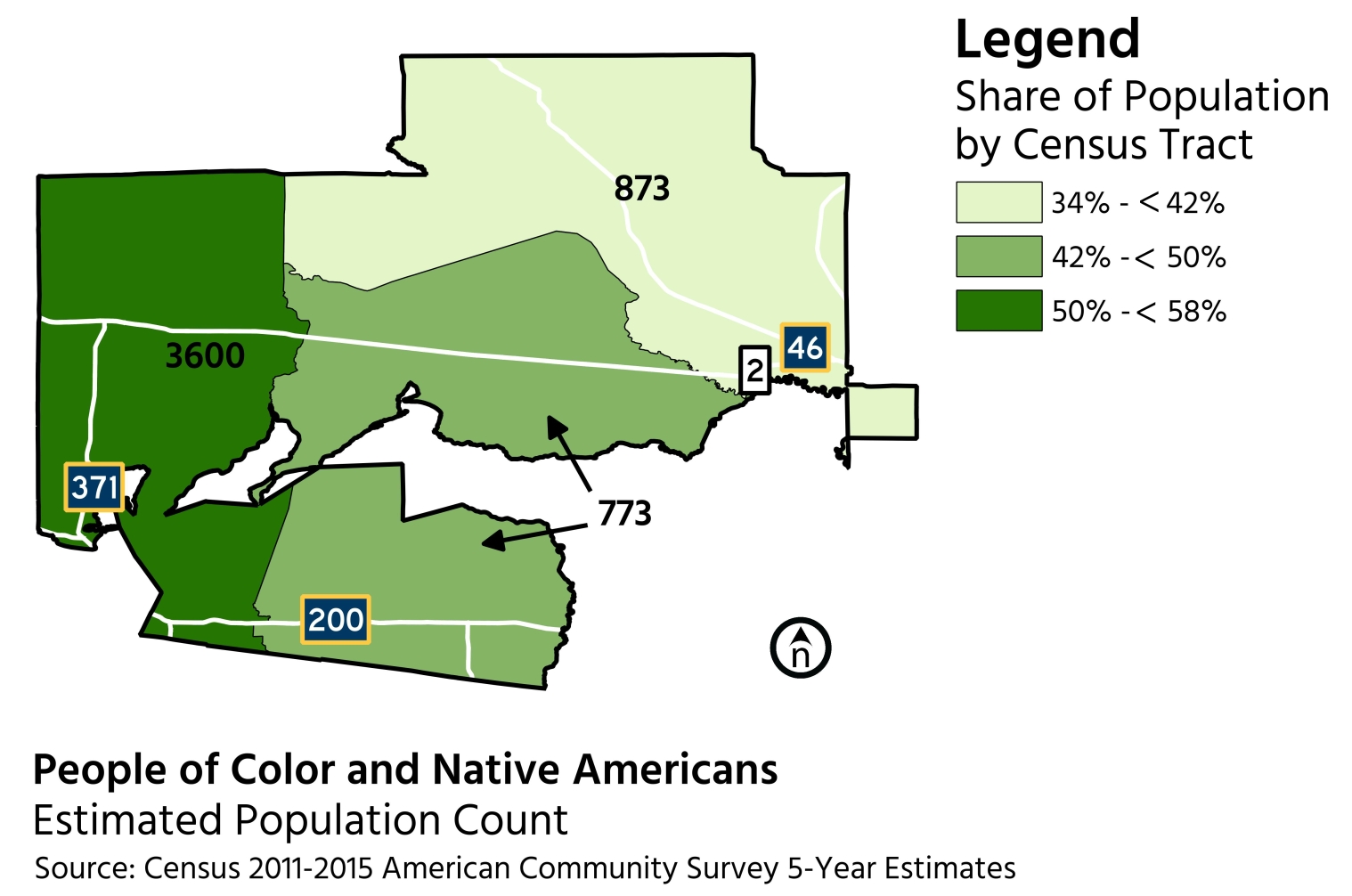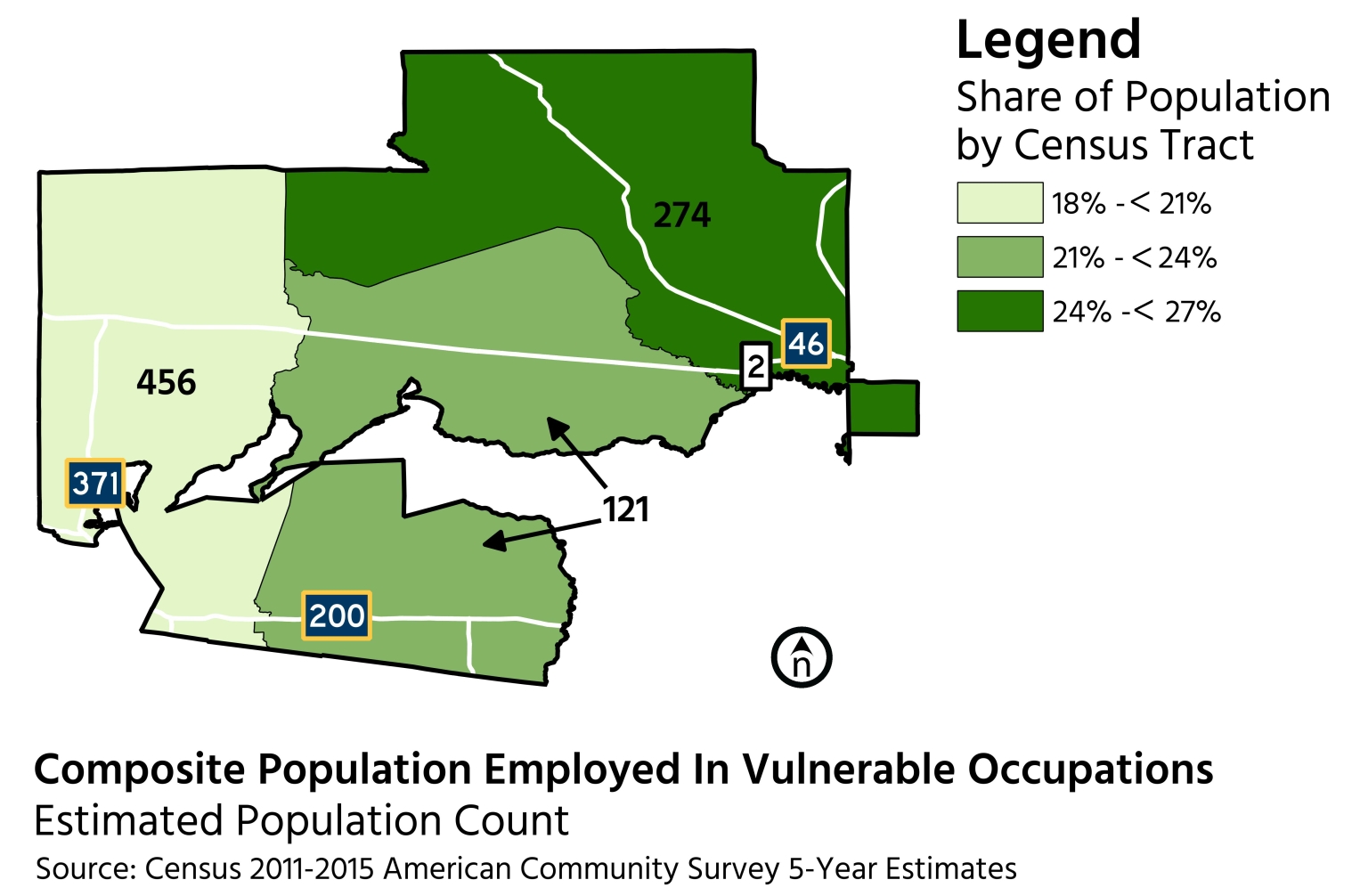“I’ve heard that a 2 degree change in temperature can wreak havoc on the earth’s surface. I am hoping our politicians and president take this seriously, as all of our future generations will be dealing with these issues if we don’t take them head on now.”
Climate Vulnerability and Adaptation For the Leech Lake Band of Ojibwe
Climate change is a global phenomenon that creates local impacts. The climate for the Leech Lake Band has already changed. From 1950 through 2015, the Leech Lake Band has experienced an increase of 1.6° in annual average temperature, an increase of 1-2 days above 95 degrees, a decrease of 11 days below 32 degrees, and an increase of extreme weather events of 48%. Over this 60 year period, the pace of change has increased from 1980 to 2010.
By 2100, the Leech Lake Band of Ojibwe can expect an increase of 3-8° in annual average temperature, an increase to 35 days above 95 degrees, 50 fewer days below freezing, and an increase in air conditioning demand by 438%. By the middle of this century (2040-2070) Summertime conditions for the Leech Lake Band are projected to be similar to the conditions currently felt over 420 miles or further to the South...the equivalent of moving the Community 265 feet south every day.
Understanding Vulnerability for The Leech Lake Band of Ojibwe
The types of exposures people have to climate change vary from region to region, as well as within sections of any given community. The inherent sensitivity we each have to climate change impacts, as well as our capacity to respond to and cope with those impacts and related health threats also vary. Different ages and life stages have inherently different sensitivities to the impacts of climate change - for example, the very young and the very old are particularly sensitive to climate-related health impacts. In addition socioeconomic factors and health disparities, known as social determinants of health, may amplify of mitigate the climate-related health effects. Within the Leech Lake Band of Ojibwe, the populations of particular vulnerability include children under 5, older adults, individuals with disabilities, individuals in economic stress, people of color, limited English speakers, and individuals employed in climate vulnerable jobs.
Climate Change impacts will affect everyone. Prioritizing the Leech Lake Band of Ojibwe's efforts to address the most vulnerable populations within the Leech Lake Reservation, however, will help ensure the greatest impact with limited resources. Based on the Assessment's review the Community’s adaptive efforts may be most effective by prioritizing strategies which address the climate risks of Extreme Temp/Weather, Air Quality Impacts, Flood risks, and Food Insecurity/Sovereignty. Particular attention should be paid to strategies which are most effective for those in Economic Stress, People of Color, Older Adults, individuals with disabilities, and those without access to vehicles.
Climate Adaptation Framework
While the science behind climate change is complex, many of the solutions to reducing impacts are already a part of Leech Lake Tibal government expertise. In many instances, responding to climate change does not require large scale changes to Tibal operations, but simply requires adapting exiting plans and polices to incorporate knowledge about changing levels of risk across key areas such as public health, infrastructure planning and emergency management.
Climate Risks to the Population
Leech Lake Band of Ojibwe Population Vulnerability Assessment and Climate Adaptation Framework
Download a copy of the report here
About The Report
The Leech Lake Band of Ojibwe Vulnerable Population Assessment and Climate Adaptation Framework report includes a review of past and projected climate change impacts, identification of community vulnerabilities, and development of adaptation strategies.
The assessment identifies climate risks and impacts on the population of the Leech Lake Band as well as climate change impact multipliers such as urban heat island effects. Vulnerable populations throughout the community are identified and mapped using GIS.
This work has been made possible by a 2017 Environmental Assistance Grant provided by the Minnesota Pollution Control Agency. Learn More


